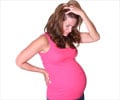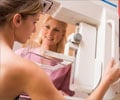Young women at high risk of breast cancer because they have a family history or genetic mutation should be screened every year using magnetic resonance imaging (MRI) in conjunction with mammogram.
Caroline Baker, an Australian breast surgeon, pointed out that young women at high risk of breast cancer currently had a mammogram and ultrasound every year, but it was not best practice.
Fewer than half her patients who should have MRI decided to do it, either because of the expense or because of claustrophobia at being in the machine.MRI is known to be more effective in detecting cancer in women under 50 than mammograms alone or ultrasounds. But each scanning costs several hundred dollars, unaffordable for many.
In November last year, an expert committee in Australia recommended that the Federal Government provide Medicare funding for MRI. It estimated about 5000 women a year would benefit, at an annual cost to the Government of $3.8 million.
It has been almost a year since the Government's medical services advisory committee made the recommendation.
Health Minister Tony Abbott endorsed it in February, but the funding still has not begun. The Government recently released its new Medicare Benefits Schedule, to come into effect next month, but to the surprise and dismay of doctors, funding for MRI breast screening was not on the list.
SIMONE Filip is only 34, but she has already had breast cancer. Twice. The first diagnosis came at 26 when she was pregnant with her first child and she found a lump in her left breast. The second diagnosis was in January this year, when she was 33. This time it was her right breast. It wasn't a recurrence, it was a new cancer. That's when her doctors knew that her cancer must have a genetic basis.
Advertisement
In Mrs Filip's case, six months before her second cancer was diagnosed she had a mammogram. The mammogram did not detect anything. It was only through her own rigorous self-examination that she noticed changes in her breast.
Advertisement
Her doctors took no chances. Mrs Filip had a double mastectomy and a breast reconstruction.
Bruce Mann, director of the breast service at the Royal Women's and Royal Melbourne hospitals, said the effectiveness of MRI for women who were at high risk had been strongly suspected for years. The final proof came from a large study in 2005.
But a downside to MRI screening was that it was more likely to deliver false positive results, causing anxiety and unnecessary biopsies, which was why it should be targetted towards the high-risk group, he said.
Cancer specialists say screening is one reason why breast cancer survival rates have improved. Cancer Council Australia chief executive Ian Olver said cancer was more likely to be curable when detected early.
"The advances in treatment have been significant as well. If you consider in the old days you had a very disfiguring operation, and now you can have the lump removed and the rest of the breast given radiotherapy," he said. "If the cancer is limited to the breast, 98 per cent of the patients will be still free of cancer in five years. This is why you want to pick it up early."
Source-Medindia
GPL/V











